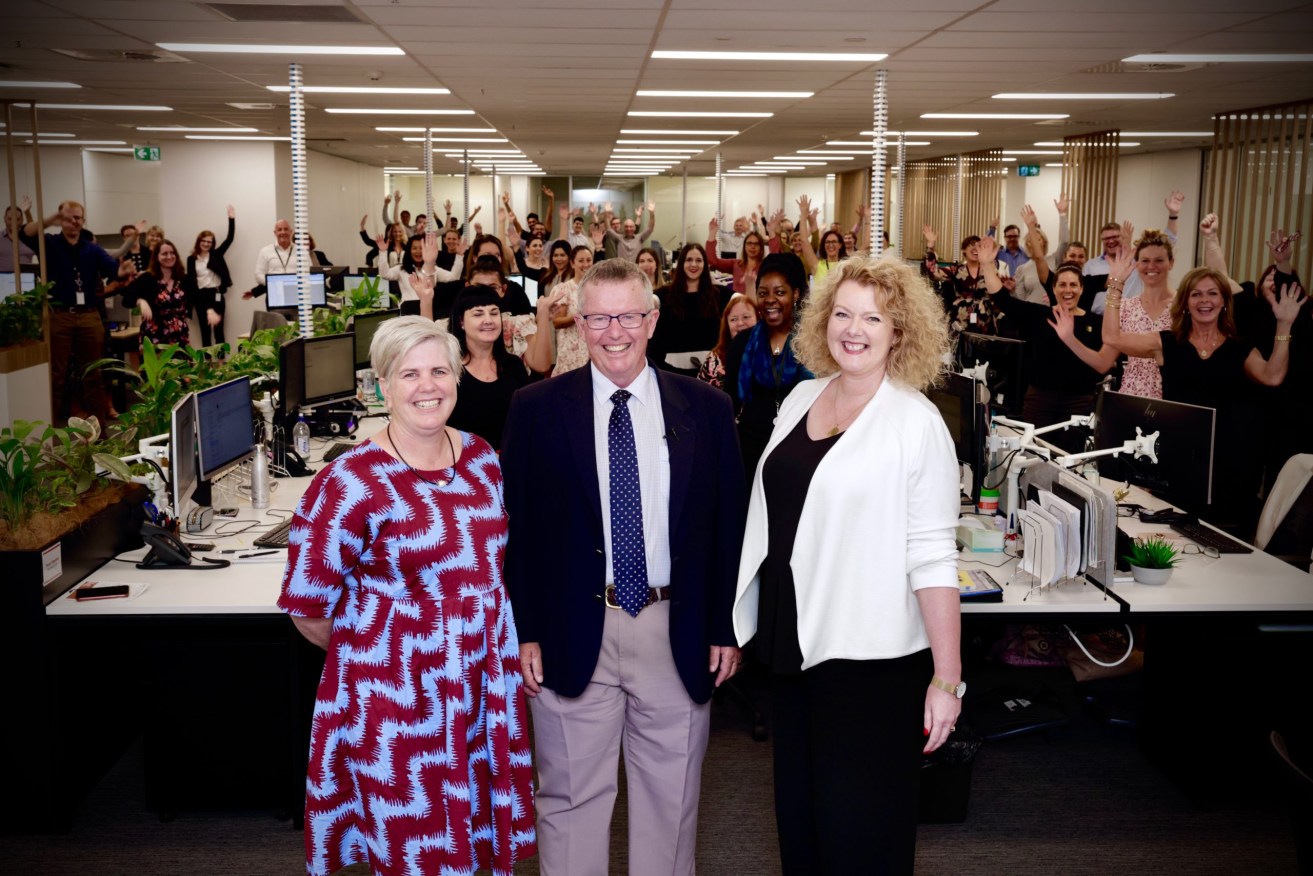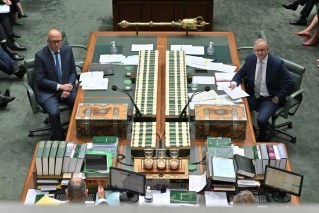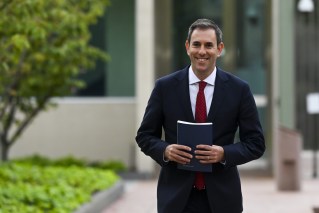GP training boost provides hope for rural communities without a doctor
The Morrison Government is placing its faith in a Brisbane-based training hub to help fix Australia’s rural doctor shortage.


Regional Health Minister Mark Coulton admits there’s no ‘silver bullet’ to ease long term pain.
Coulton was in Brisbane yesterday to open the new Queen St office of the Australian College of Rural and Remote Medicine (ACRRM) as the federal government announced increasing numbers of doctors were training to become GPs in regional, rural and remote areas.
In a joint statement with Health Minister Greg Hunt that will be released today, but seen earlier by InQueensland, the Australian Government’s 2021 Australian General Practice Training (AGPT) program has seen 1434 candidates accept places in the course this year, the largest in several years and more than 100 than last year’s intake.
Of these, ACRRM is allocated 150 training places, and the Royal Australian College of General Practitioners (RACGP) is allocated 1350.
ACRRM president and Winton GP, Dr Sarah Chalmers, said her organisation started 24 years ago with one staff member – founding CEO Marita Cowie – operating out of a small corner office.
The new office, Chalmers said, would provide room to grow, as forecasts tip further expansion of the program in coming years.
Coulton said almost 700 of this year’s cohort would undertake their training in regional, rural and remote locations across the country.
“The evidence does tell us that if you train in the regions, you are likely to stay in the regions and that’s why we are focused on supporting the rural training pipeline,” he said in the statement.
“Rural and remote communities want safe and high-quality primary healthcare services delivered by well- trained GPs with training in an extended rural skill set.
“Through work which is under way on long-term workforce and training reforms, we want to look at opportunities to provide greater supervision and support for doctors, and practical ways to build a sustainable and highly trained medical workforce.”
Health Minister Greg Hunt, who also has responsibility for aged care, said the Australian Government was strongly committed to bridging the city-country divide in providing health services to all Australians, by continuing to build the rural medical training pipeline.
“The AGPT program is a central element in this and this latest intake means more doctors studying, training and working in regional, rural and remote locations,” he said.
Coulton said the federal government understood that doctors who study and train in rural locations were more likely to choose to work and live there permanently, enjoying the benefits of a rural lifestyle.
“These high acceptance numbers show the AGPT program is working, with particular benefits for communities who may struggle to attract a GP,” he said.
The AGPT program is for doctors interested in training to become a GP in Australia. Doctors can be placed anywhere – in cities or regional, rural and remote areas.
Most successful applicants in this latest intake have already started training, with the rest to start in the next three months, according to the ministerial statement.
Medicos under strain
As previously reported by InQueensland, the ACRRM training is based on the rural generalist pathway, a model that attempts to equip an already qualified doctor with a broader range of skills required for operating in remote locations, such as delivering babies, working in emergency departments in hospitals and performing minor surgery.
Rural Doctors Association of Queensland president (RDAQ) Dr RT Lewandowski, who works as a senior medical officer with obstetric skills at Innisfail hospital, said increased interest in rural medicine was encouraging, but more reform in the sector was needed to sustain medical workforce and improve access for patients.
He said urgent attention was needed on inadequate Medicare rebates, which contribute to higher medical costs for patients when they visit a GP, while also placing increased pressure on the doctors providing the service.
“The Medicare rebate hasn’t been increased for many years, in some cases not even keeping pace with basic CPI, and it’s certainly not in line with the increased costs faced by doctors running a rural practice,” he said.
“The fact is costs are higher in the bush, especially if you live in a mining town, where living expenses and business costs are higher the further west you drive.”
Lewandowski’s view aligns with the assessments that other rural doctors have previously presented to InQueensland, describing a broken system that almost encourages doctors to cycle through patients quicker with shorter consultations or to increase fees above the bulk billing rate to protect their margins.
Inadequate Medicare funding, they say, means a greater reluctance to bulk bill, while shorter consultations can lead to compromised care for patients. Other documented cases have shown a system open to rorting.
For doctors who absorb the costs and the workloads, it can mean long hours, high pressure and added financial stress, creating conditions that destabilise the workforce.
“Rural GPs are generally caring people who want to do the very best by their patients, but they can’t operate a business and lose money, especially when they employ staff and need to cover their overheads,” Lewandowski said.
“I have no doubt that some of the numbers we are seeing in our hospital emergency departments are being driven there because Medicare rebates just aren’t keeping pace.
“Long-term chronic conditions such as diabetes or asthma are best managed at the primary care level with a GP, not in a public health emergency department when things deteriorate because the primary care has been lacking in the first place.
“If we get the primary care right, we will go a long way towards alleviating the pressure on our hospitals.”
Queensland’s shadow health minister Ros Bates has escalated the attacks on the Palaszczuk Government in recent weeks over what’s being described as systemic failures within the public health network, causing ambulances to queue outside hospitals, known as ramping, due to clogged emergency wards.
Health Minister Yvette D’Ath told Parliament earlier this month the source of the strain was a shortfall in Commonwealth funding to meet demand, exacerbated by the demands of the pandemic.
“You cannot fix ramping without talking about the pressures on emergency departments, why people are coming into emergency departments, why we are seeing people dropping out of the private health system and not taking out private health insurance, why cases of chronic illness are going up and why we do not have enough GPs who are bulk-billing in the regions,” she said.
Coulton, who is also the Federal Member for Parkes, an electorate that covers half the NSW land mass, and includes the state’s third highest indigenous population, told InQueensland that he was acutely aware of the challenge.
“The heart of the challenge that we face is that the communities highest in need have the lowest propensity to pay for their own health costs,” he said.
“We do have bulk billing incentives for regions and other payments for medical practices and workforce but we are also trialling at some sites in NSW a collaborative model with the State Government to fund primary care.
“What you have now is the argy-bargy of states managing public hospitals and the federal government funding GPs through the MBS (Medical Benefits Scheme) and we’re trying to break down that barrier.”
Coulton said under the National Health Reform Agreement, the Commonwealth contribution to Queensland’s public hospitals had grown 88 per cent since 2013, from $2.7 billion to $5 billion last financial year.








